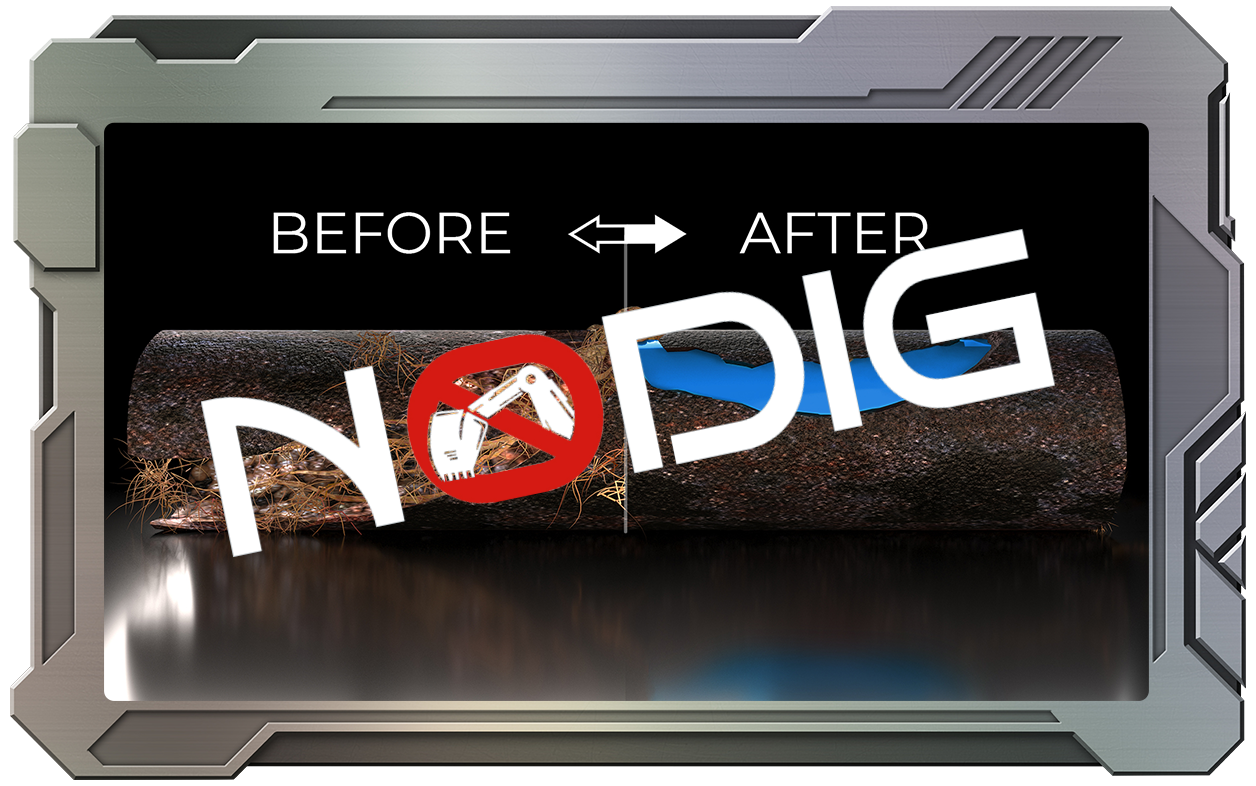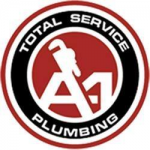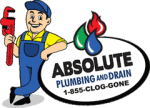The need to replace sewer lines usually arises when we observe unusual things happening inside and outside your home: foul odor from the toilets, a leak in the sink, soil corrosion, wet ground, flood, slow drains, etc.
When one or all of these become apparent, you're sure to immediately call a professional plumber to assess the extent of the damages and confirm the need to replace your sewer line.
But, a particular question always pops into our minds during situations like this: how to replace the sewer line from house to street?
In this article, we will learn the steps on how to replace sewer line from house to street, things to keep track of, and more. So, sit back, relax, and let's get started!
Replacing A Sewer Line From House to Street: Best Methods
There are two major types of sewer pipe replacement: traditional and trenchless sewer repair.
In the traditional method, extensive digging for a trench is needed, which means more equipment and added charges on top of the already expensive sewer line costs.
On the other hand, trenchless technology only requires minimal digging. It includes a sewer camera inspection to assess your sewer line problems, leading to faster work times at much lower costs.
For a more general approach, here are the steps needed to replace a sewer line from the house to the street:
Step 1) Determine the Location of Your Broken Sewer Line
First, determine the problem area to fix, repair, and work on to make the sewer line work more efficiently. There are two ways of doing this: camera inspection and guessing/estimation.
On the one hand, a sewer camera inspection can help you accurately pinpoint the problem and give you a reasonable basis for the course of action you should take.
Additionally, a camera has an attached radio transmitter that provides the exact location under the soil where you will need to dig to conduct the necessary trench repair. There will be little to no waste of resources and time.
On the contrary, guessing will only give you a very small chance of pointing out the broken sewer line, as a sewer system can go from as short as 25 feet to as long as 75 feet or more.
When you opt for the latter choice, the possibility of digging for a trench in the wrong spot will only entail higher costs for human resources, equipment, and other materials.
Step 2) Find the Utility Lines
Second, deal with the utility lines by asking for a professional's help or contacting the local authorities. A utility line is where water, electricity, and communications lines are secured.
With this, finding the utility line is essential because when your equipment touches it, the neighborhood's water, electricity, and communications may get affected.
It also follows that a utility line is laid near the sewers, making sewer repairs more complex.
Step 3) Break Concrete Obstructions Preventing Access
Third, get the concrete obstructions out of the way of your sewer repair.
If you are to replace a sewer line from your house to the street, there will surely be driveways, sidewalks, street walks, and other concrete barriers that can block your access to the sewer lines.
So, how do you do this? It is simple! With the help of professionals and their equipment (e.g., jackhammer, sledgehammer), pounding through the concrete is easy.
Some natural obstructions include tree roots, shrubs, and plants that you must remove or relocate.
FUN FACT: Vinegar can help kill tree roots effectively!
Step 4) Start Digging
Now that you have identified the critical sewer line problem, the lines of utility, and broken-through obstructions, the fourth step requires you to start digging the soil to create a trench.
In the traditional method, you need to dig deep, and that means having to use the following pieces of equipment to dig a trench along the sewer line:
- Excavator
- Backhoe
For trenchless technology, it is a minimally invasive procedure as you only need to dig one entry and one exit point to execute the following methods properly:
- Pipe bursting
- Cured-in-place pipe lining
- Slip lining
- Spray lining
In both methods, it is essential to remember the depth of the sewer line, which is approximately one foot to six feet deep.
However, it can get deeper during cold climates because of the extra layer you will have on the frozen ground you will need to avoid, called the frost line.
PRO TIP: You will need trench shields In five-foot deep trenches because the Occupational Safety and Health Administration or OSHA's safety guidelines mandate trench shields.
Step 5) Disconnect the Pipe
After reaching the sewer's location, removing obstructions, and digging, the fifth step will require you to disconnect or completely cut the pipe from the house cleanout to the property line cleanout.
You can do this by utilizing a saw or a grinder. Make sure you are knowledgeable, skilled, or have a professional handling complex equipment, as this can be dangerous when handled improperly.
After cutting or disconnecting, remove the old pipe from the sewer line system.
Step 6) Replacing a Sewer Line with a New Pipe
For the sixth step, you must replace your old sewer line with a new one. Here are the durable and efficient sewer pipelines on the market that you can use:
- Polyvinyl chloride or PVC pipes
- Cast iron pipes
- Orangeburg pipes
- Clay sewer pipes
- Galvanized iron pipes
After replacing the old pipe with newer ones (e.g., cast iron sewer pipe, PVC pipes), reconnect the entire line of sewer pipes.
Step 7) Turn the Water On
The last step when replacing is turning the water on and assessing if the sewer lines work properly. If the sewer lines are fine, cover the trenches with the soil you dug earlier.
However, if there are still problems, it is better to call a professional's help, whether a contractor or a company, to get your pipes replaced.
How Do I Know That My Sewer Line Needs Replacing?
As a homeowner, you will know when to replace sewer line pieces or conduct sewer repair when you can observe several factors, including:
- A stinking smell runs through your whole house
- Insect-sighting under your sink or on your lawn
- Sink slowly drains (or not at all) the wash water from your dishes
- Irregular wetness of the lawn
- Corrosion of the soil
- When you start hearing gurgling noises from the original pipes
- The appearance of stagnant or standing water that doesn't smell good
- Unreasonable increase in the water bill of your house
When you have one or all of these checked, it is time to call a professional to assess and remedy your sewage pipe, water damage, and other sewer line-related repairs for more sanitary sewer or drainage.
Remember that you need plumbing experts because most aspects of sewer line repair are technically difficult, whether using pipe bursting or changing old pipes using cast iron pipes or Orangeburg pipes.
Why Do I Need To Get My Sewer Line Replaced?
It would be best if you got your sewer line repaired or replaced because the contrary would result in the following situations:
- An unsanitary sewer line can produce health hazards.
- Damaged original pipes can spike your water bills.
- Corroded pipes can slow your sink's draining mechanism.
- Dented pipes can have cracks, which in turn cause leaks that can make your lawns muddy or destabilize your house structure.
- Sewer backup or water damage backflow can happen, which can produce foul odor indoors and health issues for most homeowners.
Most importantly, sewer lines and pipes are of utmost importance in one's life and surroundings because they provide a better standard of living, better water quality, and disease prevention.
Frequently Asked Questions (FAQs)
This article is not limited to giving step-by-step instructions and information but also answering tricky questions regarding sewer lines and pipe repairs.
In this section, we will answer some of your burning FAQs!
Different factors affect the cost of replacing the sewers. The price gets more expensive, particularly with the main sewer line replacement cost.
Here are some of the factors affecting its total price:
- Human resources (whether it involves digging a trench invasively or not)
- Heavy-duty construction equipment
- Fall and safety protection as per OSHA's safety guidelines
- Sewer camera inspection with a radio transmitter
- Obstructions and challenges
- State construction permits on houses or commercial buildings
- The extent of pipe damages
- Location of pipe damage (e.g., the old house, land with tree roots)
- Emergency fee
- Landscaping and restoration
As a homeowner, you must pay a sewer line replacement cost of around $500 to $20,000 to replace the sewer line, repair leaks, and fix cracks and damages in a pipe, sewer line, and septic tank.
These prices will vary depending on whether they're complete or partial repairs on the pipeline from your house to the street.
Sewers need to be replaced when they get damaged for the following reasons:
- Fats, oils, and grease accumulate in the sink and solidify in pipes (but you can prevent it by knowing how dissolving grease in sewer lines works!)
- Tree root invasion that causes damage to the pipeline
- Clogs in toilets from paper towels and stuck toys
- If the cast iron pipes or other types have been lying still on your house to the street for years (old)
FACT: Clogged sewers are also called back-pitched pipes. Yet, a back-pitched pipe doesn't typically follow the usual clogging reasons as it leans more into the pitch layout during construction.
Conclusion
Replacing the line of sewers from the house to the street is no easy task, as digging for a trench in the wrong spot can lead to problem after problem. That is why, as a homeowner, you must ask for professional help.
Yet, if you want to try replacing it firsthand, make sure to keep these steps in mind:
- Find the sewer line's right location
- Ask local authorities for the lines of utility
- Break obstructions along the entire length of your lateral sewer line from the house to the street
- Dig for the trench or entry points using the right tools
- Disconnect the pipe from the house to the property line cleanout
- Remove replaced line and place a new one
- Complete the work properly by turning the water and covering the trench
Now that you know all of these, get back on track and start to fix, replace, or repair your sewers from house to street for a much better everyday quality of life!
It's great to be listed on NoDig
-
Join a network of verified sewer repair specialists
-
Get recognized
-
Update your business information
Unlock your listing in minutes.






